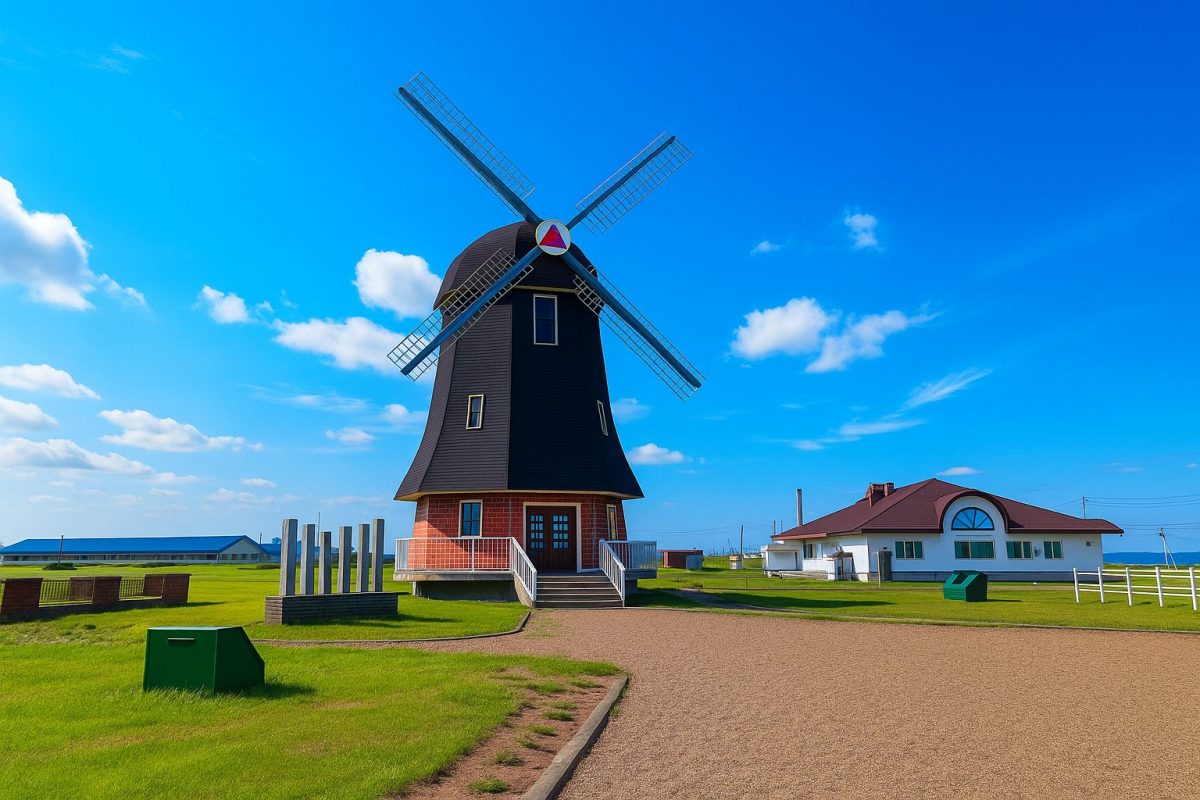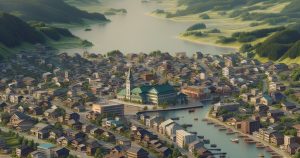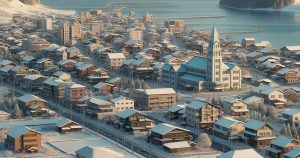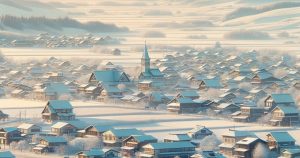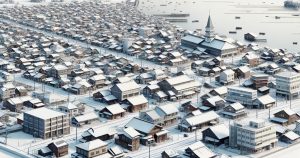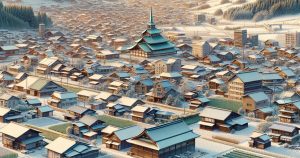| population | 2,599 peoples |
|---|---|
| area | 589.99 km² |
| population density | 4.41 peoples/km² |
Sarufutsu Village, located in the northernmost part of Japan on the Okhotsk coast of Hokkaido, is a land where people live in harmony with vast nature. The village’s name originates from the Ainu word “Sar-put,” meaning “mouth of the reed river,” reflecting its deep connection to the indigenous Ainu culture. Since the Meiji era, Sarufutsu has grown through pioneering efforts, overcoming the harsh northern environment. Today, it thrives on fisheries and dairy farming, with scallop fishing recognized as the largest in Japan. The lifestyle here is shaped by the rhythm of the seasons and the bounty of nature, symbolizing the strength and perseverance of its residents.
During festival seasons, the whole village comes alive with joy and unity. Events such as the “Sarufutsu Tourism Festival,” which celebrates the prosperity of the sea, and the “Indigirka Memorial Service,” honoring those lost in a maritime disaster, reflect both gratitude and remembrance. Living with nature while preserving their traditions, the people of Sarufutsu continue to welcome visitors with warmth that truly defines “the spirit of Japan’s northern frontier.”
Cultural Traditions
Sarufutsu Village belongs to the Soya Subprefecture and faces the Okhotsk Sea. Its unique culture blends Ainu heritage with the pioneering spirit of the Meiji era. Many place names retain Ainu origins, and the local dialect carries expressions unique to Hokkaido. Life here revolves around coexistence with nature — the villagers rely on the rich sea and forest resources while valuing community bonds and cooperation.
One of the most symbolic local events is the Sarufutsu Tourism Festival held every July. Visitors can enjoy fresh scallops, seafood barbeques, stage performances, and fireworks along the coastline. Another important event is the Indigirka Memorial Service, commemorating the 1939 shipwreck of the Soviet vessel *Indigirka* off the Sarufutsu coast. This ceremony, held every December, represents the villagers’ compassion and historical remembrance.
Efforts to preserve Ainu traditions have been increasing in recent years. Cultural groups teach traditional crafts, songs, and languages to younger generations. Education programs in local schools emphasize respect for nature and the wisdom of living in harmony with it — values deeply rooted in Sarufutsu’s way of life.
Local Specialties
- Scallops: Sarufutsu’s signature product and the pride of the village. With the largest scallop catch in Japan, these shellfish are thick, sweet, and flavorful. The village’s success lies in strict resource management, controlled seeding, and sustainable fishing practices.
- Sea Urchins: Grown in the cold, clear waters of the Okhotsk Sea, both *Murasaki Uni* (purple sea urchin) and *Bafun Uni* (short-spined sea urchin) are known for their rich, creamy sweetness. The “Uni-don” (sea urchin rice bowl) is a must-try summer delicacy.
- Kelp and Wakame Seaweed: The coastline provides an ideal environment for high-quality kelp and wakame. Locally produced dried kelp and salted wakame are popular souvenirs among visitors.
- Salmon: The autumn salmon runs in the Sarufutsu River bring in fresh, fatty fish perfect for grilling or preparing as *chan-chan-yaki*, a local miso-flavored dish.
- Dairy Products: Surrounded by vast pastures, Sarufutsu produces rich milk, butter, and cheese. The creamy, natural flavor is highly regarded throughout northern Hokkaido.
Annual Events
- Sarufutsu Tourism Festival (July): The biggest summer festival featuring scallop barbeques, seafood markets, stage performances, and fireworks — a highlight for locals and tourists alike.
- Indigirka Memorial Service (December): A solemn ceremony honoring victims of the 1939 Indigirka shipwreck. Villagers gather to lay flowers at the memorial monument.
- Sarufutsu Winter Festival (February): A celebration of northern life featuring snow sculptures, hot local dishes, and snowmobile rides — offering a taste of true Hokkaido winter.
- Autumn Harvest Festival (September): A seasonal event where visitors can enjoy local farm produce and dairy products while celebrating the bounty of autumn.
Access
- By Air: The nearest airport is Wakkanai Airport, about a 40-minute drive from the village. Direct flights operate from Sapporo (New Chitose) and Tokyo (Haneda).
- By Train: There are no train lines in the village. The closest station is Minami-Wakkanai Station on the JR Soya Main Line. From there, travelers can take a bus or rent a car (approx. 1 hour).
- By Car: Drive along National Route 238 (Okhotsk Line) south from Wakkanai City. The journey from Cape Soya takes about 1 hour, or about 5 hours from Asahikawa.
- By Bus: Soya Bus operates routes connecting Wakkanai, Hamatonbetsu, and Sarufutsu. The main stop is the “Onishibetsu Terminal.”
Tourist Attractions
- Esanuka Line – A 16 km straight road stretching through grasslands and wetlands with no guardrails or power lines, offering breathtaking ocean views. A popular route among bikers and photographers.
- Michi-no-Eki Sarufutsu Park – A roadside rest area featuring hot springs, a campground, and a restaurant serving local scallop dishes.
- Sarufutsu Onsen – A peaceful hot spring resort overlooking the Okhotsk Sea, offering lodging and open-air baths.
- Sarufutsu River – Home to *Ito* (Sakhalin taimen), one of Japan’s largest freshwater fish species. A legendary spot for anglers.
- Poronuma and Kamuito-numa Lakes – Located within the North Okhotsk Prefectural Natural Park, these wetlands host a rich variety of flora and fauna.
